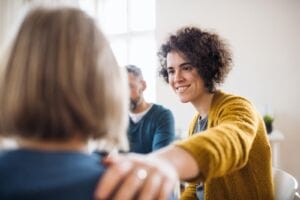Arizona Leaders know it’s a problem.
“When one of our top employers of scientists and engineers says that if he had the decision to make all over again, he would never bring his business and its thousands of high-wage jobs to Arizona because of the lack of commitment to education, that is a call to action,” says Phoenix Mayor Greg Stanton.
The top employer Stanton is talking about is Craig Barrett, former Intel CEO, who told state lawmakers in no uncertain terms that cuts in education are stifling Arizona’s economic development. But the financial aspect of education isn’t the only thing suppressing the state’s ability to prosper in the technology and bioscience industries. It’s the quality of Arizona education that’s killing us, according to another Valley tech leader.
“Our high schools are a mess,” says Steve Sanghi, CEO of Microchip in Chandler. “They are among the worst in country and that is a major problem that we need to address before the state can prosper.”
Sanghi sees many hopeful workers come into Microchip looking for a job, but are unable to pass a remedial math test that the company gives to all prospective employees. If they cannot pass, they cannot get hired, Sanghi says.
“STEM education — science, technology, engineering, math — is where we lack,” Sanghi points out. “That’s where the most competitive, high-paying jobs will be in the future. That’s where other countries are taking our jobs and taking our positions. That’s where we need to improve, but that’s a very tall order.”
It seems like a Herculean task. Arizona ranks 44th in the country in the Quality Counts report, compiled each year by Education Week in conjunction with the Education Research Center. That ranking represents a slight drop from the state’s standing in last year’s report.
“Today’s students have a lot of distractions,” Sanghi says. “We cannot compete with Hollywood stars or sports figures because they are bigger than life. It’s easy to get students to dribble a ball or go into music or arts. It’s crucial that we get them interested in science and technology before pop culture gets them. Once pop culture gets them, we can’t get them back.”
The only way to change the way students view education is through visionary leadership, says Pearl Chang Esau, president and CEO of Expect More Arizona, a statewide movement dedicated to making Arizona education the best in the nation.
“Our leaders need to start viewing education as an investment, not as an expense,” Esau says.
Many of Arizona’s leaders are taking the challenge to heart and introducing programs and legislation aimed at promoting and strengthening STEM education in the state:
- Rep. Heather Carter, R-Cave Creek, has introduced a bill to make it easier for STEM professionals to become certified to teach and bring their expertise to the classroom.
- Rep. Kimberly Yee, R-Phoenix, has introduced legislation to boost STEM education in poorly performing schools by calling for the State Board of Education to intervene when a school has earned a D or F for two consecutive years.
- And Stanton, who campaigned on an education platform even though he was publicly criticized because school districts, not cities, have jurisdiction over education in Arizona, has created a Mayor’s Futures Forum on Education.
“The city of Phoenix is not as well-positioned as it should be to compete in the national economy,” Stanton says. “We need more of our kids graduating high school and studying in areas that will create the jobs of the future.”
Ironically, the man who has been the biggest critic of the state’s poor education record may be the man to help give it a much-needed spark. Retired Intel CEO Barrett has been named chairman of the Arizona Ready Education Council. He will be heading “Arizona Ready,” which is dedicated to helping Arizona students prepare to succeed in college and in careers that will boost the state’s economy. To improve education, Arizona Ready has established specific, measurable goals and accountability for everyone involved in educating our children.
“There is a lot of room for improvement in the K-12 education system in Arizona,” Barrett says. “I believe it is the responsibility of society to give the next generation the tools to be successful.”
Barrett insists that Arizona schools need to strive not just to be the best in the state, but they need to challenge themselves to be the best in the world so Arizona can compete in the global marketplace.
“It is not appropriate to just compare one local school district, or state, with another,” Barrett says. “You have to compare the accomplishments of your students with the best in the world.”
Glenn Hamer, president and CEO of the Arizona Chamber of Commerce and Industry, agrees with Barrett that raising the standards is imperative to improving education and creating a pipeline of future workers with the skills to succeed in tomorrow’s tech-heavy industries. To accomplish that, Arizona Ready is raising the standards and hopes to accomplish these goals by 2020:
- Increase the percentage of third-graders meeting state reading standards to 94 percent. In 2010, 73 percent met the standard.
- Raise the high school graduation rate to 93 percent.
- Increase the percentage of eighth-graders performing at or above “basic” on the National Assessment of Education Programs (NAEP) to 85 percent. In 2010, the numbers were 67 percent in math and 68 percent in reading.
“Every kid has that dream of becoming a celebrity in Hollywood or becoming a sports star,” Sanghi says. “But the chances of the average high school student making it in Hollywood or in sports is 1 in 1,000 at best. But if we can get them interested in STEM and get them to dream about becoming a doctor or scientist or engineer, the chances of them achieving their dream is pretty high. Most will be able achieve that.”




